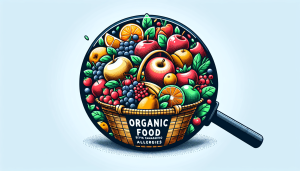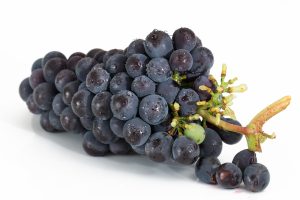Organic vs Inorganic Compounds: Introduction to the Battle of Compounds
Life’s Complex Choices
Life is a fascinating interplay of decisions that shape our experiences and worldviews. Whether it’s choosing between pizza and salad or making more complex choices, our decisions impact us in ways both big and small. But what if I told you that one such choice—often made unconsciously—is the decision between organic vs inorganic compounds? Before you scratch your head in confusion, let me assure you, that this subject is far from boring scientific jargon. It’s actually a choice that subtly influences almost every facet of your daily life!
More Than Just Chemistry
You might remember the terms “organic” and “inorganic” from your high school chemistry class. But what you may not realize is how these types of compounds affect you beyond the textbook. They’re not just theoretical concepts confined to laboratories; they’re ingredients in your food, components of your cleaning products, elements in your medicines, and even factors affecting your environment. The implications are both immediate and long-lasting.
The Far-Reaching Impact
The significance of organic vs inorganic compounds extends far beyond personal choices and lifestyle. It’s a subject that delves into environmental conservation, healthcare, agriculture, and industrial applications. Whether it’s the organic vegetables you consume or the inorganic disinfectants used in hospitals, the “battle of the compounds” impacts society on a grand scale.
The Everyday Connection
Yes, you read it right. Organic vs inorganic compounds are so deeply woven into the fabric of our lives that they touch upon everything we eat, drink, breathe, and even apply on our skin. From the organic compounds in the perfume you wear to the inorganic elements in your smartphone, they’re everywhere.
A Journey of Exploration
So, ready to flick the ‘curiosity’ switch on? Let’s navigate through the intriguing, and often misunderstood, world of organic and inorganic compounds. We promise you won’t need a lab coat, but you might need a sense of wonder as we explore this fundamental dichotomy that plays a pivotal role in shaping our lives and the world around us.
Organic vs Inorganic Compounds: What are Organic Compounds?
If chemistry were a Broadway show, organic compounds would undoubtedly be the shining star! Why, you ask? Because organic compounds are at the heart of all life forms on Earth. They’re the divas of the microscopic world, turning the wheels of life in their unique style.
These compounds are made up of carbon atoms holding hands (more like covalently bonding) with hydrogen atoms, forming an intricate network that can also include other elements like nitrogen, oxygen, sulfur, and phosphorus. It’s this unique combination and arrangement of atoms that give organic compounds their star-like status.
The carbon atom is like the social butterfly of the atomic world. It loves company and easily forms bonds with other atoms, especially hydrogen. It’s also a master of disguise, transforming itself into different structures, from straight chains to rings, giving rise to a mind-boggling variety of organic compounds.
Common Examples of Organic Compounds
Imagine you were at a celebrity gala event, full of the who’s who from the world of organic compounds. Here are some of the guests you might come across:
Methane: The Energetic Enigma
Methane (CH4) is like the class clown in the world of organic compounds. It’s well-known for its role in, um, bovine bodily functions, making cows notorious for their contribution to global warming. But that’s not all. Methane is essentially a significant component of natural gas, and it’s used worldwide for heating and cooking. So, next time you cook dinner, remember you have the life of the party, Methane, to thank!
Glucose: The Powerhouse
Glucose (C6H12O6), as the name suggests, is all about ‘sweet’ power. It’s the primary energy source for our bodies, serving as the gasoline for our biological machinery. Our body breaks down the food we eat into glucose, which is then utilized to provide energy for everything we do, from running a marathon to simply breathing. It’s like the ever-ready battery of the organic compound world, always there to keep the energy levels up.
DNA: The Blueprint of Life
Imagine if life came with an instruction manual. Well, it sort of does, in the form of Deoxyribonucleic Acid (DNA). DNA is the star designer, holding the blueprint for all living things. Made up of just four organic molecules – adenine, thymine, cytosine, and guanine – DNA determines everything from your hair color to your risk of specific genetic diseases. Think of it as the director of the movie of life, silently scripting every detail behind the scenes.
Ethanol: The Social Lubricant
Ethanol (C2H5OH), often found in alcoholic beverages, is like the fun-loving, extroverted guest at a party. It’s a psychoactive substance that’s responsible for the ‘buzz’ you get from your favorite cocktail. It’s also used in thermometers and as a solvent in the manufacture of varnishes and perfumes. Ethanol, therefore, holds a unique position among organic compounds, serving both recreational and industrial purposes. Don’t we all need Ethanol in our lives to keep things interesting?
Organic vs Inorganic Compounds: What are Inorganic Compounds?
Inorganic compounds, on the other hand, are like the strict disciplinarians in the world of chemistry. They don’t play by the carbon-hydrogen rules and are typically more straightforward. If the party of life was a school, these compounds would be the stern headmasters and headmistresses, adding a touch of stern orderliness to the otherwise chaotic chemistry club.
These compounds can be naturally occurring, like minerals, or can be created synthetically for various industrial uses. And the best part? They don’t contain carbon-hydrogen bonds, which are characteristic of organic compounds. But don’t be fooled by their simplicity. These compounds are as essential to life and its processes as their organic counterparts.
Common Examples of Inorganic Compounds
Water: The Universal Solvent
Ah, good old H2O! Water is arguably the most essential inorganic compound. It’s the lifeblood of the planet, covering about 71% of the Earth’s surface. It regulates temperature, carries nutrients to cells, and even assists in flushing out waste from our bodies. If you think about it, water is like the quiet, dependable friend who’s always there, nourishing, replenishing, and silently playing an indispensable role in life processes.
Sodium Chloride: The Flavor Master
You probably know this one better as table salt (NaCl). Sodium Chloride is an inorganic compound that adds flavor to our food. But it’s not just a kitchen essential. Sodium Chloride plays a vital role in maintaining the electrolyte balance in our bodies and is also crucial for nerve and muscle function. It’s like the invisible puppeteer, subtly but significantly influencing our health and well-being.
Diamond: The Unbreakable Star
Diamond (a form of carbon atoms arranged in a crystal lattice) is an inorganic compound and one of the hardest known materials. It’s highly valued for its uses in jewelry and industrial applications. If the world of inorganic compounds was a glitzy red carpet event, diamond would definitely steal the show, flaunting its unmatched brilliance and durability.
Iron Oxide: The Inevitable Aging Companion
Ever noticed the reddish-brown flaky material on old iron objects? That’s Iron Oxide (Fe2O3), also known as rust. It’s a sign of iron’s natural aging process when exposed to oxygen and moisture over time. While it’s often seen as a symbol of decay or neglect, it’s also used in many industrial applications, including steel production and pigments for paints. So, in the world of inorganic compounds, rust is like that aged, wise figure, weathered by time but still very much valuable.
Inorganic compounds are like the quiet, serious ones at the party. They don’t contain carbon-hydrogen bonds. They can be found in nature in minerals and many are synthesized for industrial use.
The Great Divide: Main Differences between Organic and Inorganic Compounds
Carbon-Hydrogen Bonds: The Signature Move
The main difference between organic and inorganic compounds comes down to one simple thing: Carbon-Hydrogen bonds. Organic compounds are like the cool kids who love to hang out together, with carbon and hydrogen always teaming up. In contrast, inorganic compounds are the non-conformists who typically do not contain Carbon-Hydrogen bonds.
Complexity: From Simple to Mind-Boggling
The structural complexity of organic compounds is like the mind-bending plot of a Christopher Nolan movie. From simple chains to complex rings, carbon’s ability to form stable bonds with many other elements, including itself, leads to a dazzling variety of structures. On the other hand, inorganic compounds usually have simpler structures – they’re the straightforward, easy-to-follow romantic comedies of the compound world.
Melting and Boiling Points: The Heat is On
Organic compounds, like the rebellious teens they are, typically have lower melting and boiling points and are often flammable. They’re the drama queens, quickly going from solid to liquid, or even gas when the heat is turned up. Inorganic compounds, however, like the calm and composed adults, usually have higher melting and boiling points, maintaining their cool (or rather, their state) in the face of heat.
Solubility: The Mixer vs The Wallflower
When it comes to solubility, organic compounds are like wallflowers, choosing to mix with similar compounds (like dissolves like). They are often soluble in organic solvents but not in water. Inorganic compounds, however, are social butterflies. They’re generally water-soluble, mingling freely with H2O and other polar solvents.
Reactions: Slow and Steady vs Fast and Furious
When it comes to chemical reactions, let’s dive a bit deeper into organic vs inorganic compounds. organic compounds are like the tortoise in Aesop’s fable, preferring slow and steady reactions. In contrast, inorganic compounds are like hares, participating in fast and usually highly exothermic reactions. Remember that explosive chemistry lab experiment from high school? Yep, that was probably an inorganic compound showing off.
Organic vs Inorganic Compounds: The Impact on Our Lives
Health and Medicine: The Life-Savers
Organic compounds are like the superstars of health and medicine. They are the key players in our bodily functions, including growth, digestion, and sensory perception. Medicines, vitamins, proteins, lipids, and carbohydrates are all examples of organic compounds that our bodies need to function effectively. It’s like having a dedicated health and wellness team working tirelessly around the clock to keep you in top shape.
On the other hand, inorganic compounds also play essential roles in our health. Essential minerals like iron, calcium, and potassium, often found in inorganic compounds, are crucial for our bodies. For instance, without iron (found in inorganic compounds like ferrous sulfate), our bodies couldn’t produce hemoglobin, and we’d have a real problem transporting oxygen around our bodies. It’s as if inorganic compounds are the unsung heroes, quietly ensuring the smooth operation of the machinery of life.
Environment and Ecology: The Silent Guardians
Organic compounds also significantly influence our environment and ecology. For instance, consider the carbon cycle. Organic compounds like carbon dioxide are integral to the photosynthesis process in plants. In return, plants provide us with oxygen, helping sustain life on Earth. It’s like a never-ending, life-supporting relay race, with organic compounds passing the baton.
In contrast, inorganic compounds, like water and various minerals, play an equally important role in maintaining ecological balance. For example, the water cycle ensures a continuous supply of fresh water, a vital resource for all life forms. Inorganic compounds are the silent sentinels, maintaining the balance and ensuring life’s continuity.
Industry and Technology: The Game-Changers
Both organic and inorganic compounds are key players in industry and technology. Organic compounds like hydrocarbons are used as fuel, powering everything from cars to power plants. Plastic, a byproduct of organic compounds, has revolutionized packaging, medical, and various other industries. It’s like organic compounds are the high-octane, tireless workhorses powering our modern lifestyle.
Inorganic compounds, too, have made their mark in industry and technology. For instance, silicon (found in quartz, an inorganic compound) is fundamental to the electronics industry. Meanwhile, metals (most of which are inorganic) are used everywhere from construction to the automotive industry. In essence, inorganic compounds are sturdy, reliable builders and enablers of our modern world.
Health Implications of Organic and Inorganic Compounds
Health Benefits of Organic Compounds
Organic compounds are like that friendly neighbor who’s always ready to lend a hand. They help our bodies function properly, and they’re essential for our survival.
Health Risks of Inorganic Compounds
Inorganic compounds can be like the neighbor from hell if not handled properly. Some can be harmful or even deadly to our bodies, like lead or mercury.
Organic vs Inorganic Compounds: Conclusion
A Complex Relationship
When we discuss organic vs inorganic compounds, it’s a bit like asking if a beach vacation is better than a mountain retreat. Each has its own unique attributes, benefits, and shortcomings. Organic compounds, with their carbon-based structures, serve as the foundational building blocks of life. They are integral to the very fabric of living organisms, responsible for vital processes like energy storage, cellular function, and genetic inheritance.
The Role of Inorganic Compounds
On the other side of the spectrum, inorganic compounds—those without carbon-hydrogen bonds—also play crucial roles. They might not be the stars of the biochemical show, but they’re absolutely critical as supporting actors. Elements like iron in our blood or calcium in our bones are examples of inorganic compounds essential for life.
A Balanced Coexistence
So, it’s not a question of which is more important; rather, it’s about understanding that both are essential in their own right. Organic and inorganic compounds are like two sides of the same coin; they co-exist and interact in countless ways to sustain life and natural processes on Earth. It’s a party worth attending because it’s a party we literally cannot live without.
FAQs
What is the main difference between organic vs inorganic compounds?
The primary difference lies in their molecular composition. Organic compounds always contain carbon and hydrogen atoms, and they are often associated with living organisms. Inorganic compounds, on the other hand, can be composed of various elements and do not necessarily contain carbon and hydrogen. They are often found in non-living systems, although they play crucial roles in biological processes as well.
Why are organic compounds essential to life?
Organic compounds like proteins, fats, carbohydrates, and nucleic acids are fundamental to life as we know it. They make up the cells and tissues of organisms, serve as energy sources, and facilitate vital biochemical reactions. For example, DNA—an organic compound—is the molecule that carries genetic instructions for the development, functioning, and reproduction of all known living organisms.
Can inorganic compounds be harmful?
Inorganic compounds can range from beneficial to benign to harmful. For instance, minerals like calcium and iron are essential for human health. However, other inorganic compounds, like certain heavy metals such as lead and mercury, can be toxic. These harmful substances can contaminate water and soil, posing risks to both human health and the environment.
Why do organic compounds react slower than inorganic ones?
Organic compounds often have more complex structures, with multiple bonds and larger molecules. This complexity requires more energy to break the bonds and initiate a reaction. Inorganic compounds, being generally simpler and often ionic in nature, require less energy to initiate reactions, making them typically faster to react under the same conditions.
Can organic compounds exist without inorganic compounds?
No, the relationship between organic and inorganic compounds is symbiotic and fundamental to life on Earth. They interact in many essential processes. For example, plants convert inorganic carbon dioxide into organic glucose through photosynthesis. Additionally, inorganic ions and elements are crucial for the structure and function of organic molecules. In essence, neither can exist in isolation; both are essential players in the complex web of life.
Understanding the nuanced interactions between organic and inorganic compounds helps us appreciate the delicate balance that sustains life and natural processes on Earth. It’s a topic that not only satiates our scientific curiosity but also underscores the interconnectedness of all things in our world.




